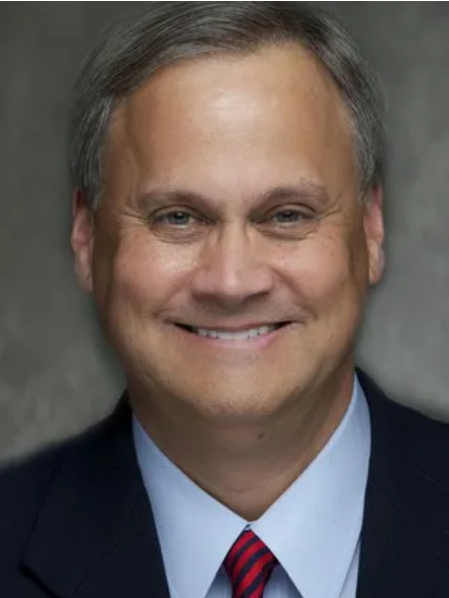Here's What the Indiana Coal Council and Other Groups Want for the State's Energy Future

By Sarah Bowman
November 18, 2020 - Indiana's energy future hangs in the balance: How much coal the state will burn and how many wind turbines and solar panels will be built remains to be seen.
The Indiana 21st Century Energy Task Force has been working to answer those questions over the last 18 months. It has held nine meetings and now has just one left until the group's final report and recommendations to the state's legislature are due by Dec. 1.
The task force — which is made up of legislators and governor-appointed experts in the field — has received testimony and heard presentations from dozens of analysts and experts, state agencies, company representatives, industrial groups and advocacy organizations as part of the process.
All of them have shared their view of where Indiana's energy landscape currently is, and where they think it could and should go.
Here's a sample of what some of the contributors and task force members have said they want for the state going forward.
The NAACP
Denise Abdul-Rahman spoke on behalf of the Indiana chapter of the NAACP. She emphasized the importance of transitioning to new energy sources, and building an energy system that provides equitable access and delivery of electricity. She included some specific recommendations such as establishing mandatory targets for energy efficiency and renewable energy.
She also said she'd like to see creation of what she called "Green Zones," where highly polluted and economically depressed neighborhoods are transformed into vibrant areas with green business practices, a healthier environment and strong economy. She said clean energy sources and jobs can be a key component.
Phil Powell, Task Force Member
Powell is a professor of business economics and public policy at Indiana University's Kelley School of Business. After all he's learned during the task force, he said there are three main points that are a priority for him. The first is that he would like to give the state's utility regulatory agency a clearer mandate on what they are looking for when it comes to reliability, accompanied with various tools to meet it.
He also wants to see the state help utilities finance the costs of retiring coal plants early and maintaining affordability as the state transitions to renewables. Several states across the country have implemented similar securitization legislation. Powell also wants to provide assistance to workers and communities impacted by closing coal plants, as well as communities that have faced pollution from these facilities.
Indiana Coal Council
During the most recent task force meeting, the Coal Council proposed legislation that would create a "glide path" to control the transition away from coal over a defined period. More specifically, the legislation would establish minimum energy standards — which the Coal Council called "resilience requirements" — that utilities would have to meet over the next 15 years.
It would require utilities to get a set amount of their energy from coal at the beginning and only a certain amount from renewable and other energy resources, including natural gas. Then, as the years go on, the coal requirements would steadily decrease while renewables would be allowed to steadily increase.
.png)
Solar panels on William Harlow's farm in Sharpsville, Indiana
Photo: Emergent Solar Energy
Citizens Action Coalition
Kerwin Olson, the executive director of consumer advocacy group, said he would like to see the state reexamine its energy efficiency policy and recognize the value of distributed generation — the generation of power near to where it will be used, rather than at large, centralized facilities. Putting solar panels on roofs is one source of distributed generation. To Olson, that includes reinstating net metering, or adopting some other incentive to encourage solar installation.
He also wanted to place a focus on affordability for residential customers. Olson said he feels discussions of cost are often centered on industrial and commercial customers, forgetting the everyday ratepayer. He wants mechanisms for the regulatory commission to consider customers' bills when looking at utilities' requests for more money.
Jim Merritt, Former Task Force Member
Merritt, a former state senator representing Indianapolis, retired from the General Assembly this year. Prior to retirement, the Republican senator served on the task force and as the chair of the Senate Utilities Committee. Though he no longer has a say in the final report, he said he would really like to see the state invest in the development of battery storage to help increase the use and reliability of renewables.

State Sen. Jim Merritt, R-Indianapolis
He said he also wants to see the state create a framework for local ordinances on renewable energy. Right now, regulations and requirements differ from county to county, and Merritt said it would be helpful to have consistency across the state to encourage wind and solar companies to invest in Indiana.
Indiana Industrial Energy Customers
Indiana is a major manufacturing state, and many of those companies are members of the Indiana Industrial Energy Customers group, or INDIEC. The organization said it wants to see any policy out of the task force reflect the state's current commitment to supplying reliable energy, which manufacturers need for their process. INDIEC also wants to see more opportunities for self-generation and sustainable resources, a growing concern among investors.
In order to find that balance, the industrial group wants to recognize the value of state agencies such as the Indiana Utility Regulatory Commission and the Utility Forecasting Group. INDIEC suggested providing them with additional tools and resources to carry out their independent roles that allow them to make evidence-based decisions and recommendations.

